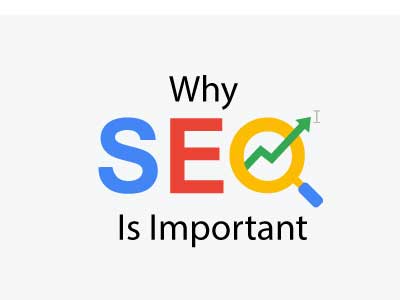WHY SEO IS IMPORTANT

In a short period of time, the practice of SEO has transitioned from being a mysterious fuzzy science practiced by nerdy number crunchers in the wee hours of the morning to that of a necessary strategic step practiced by PR and social media professionals during the course of a normal business day.
In this blog post, I’m going to discuss why SEO is important today in a broad marketing plan and strategy. I’ll also identify what I consider to be a major misconception about SEO.
SEO, Strategy and Positioning
From a strategic marketing standpoint, SEO is focused on gaining insights into market dynamics. And it can also be especially helpful when it comes to gaining insights into the competitive market. SEO is all about supporting the development of an effective strategy for helping ensure that your brand, product, or company is well positioned around key topics in your core competitive space.
Let me talk about the concept of positioning for a second. Because understanding what positioning is, as well as what it isn’t, is critical when it comes to discussing why SEO is important. Your brand, company or product’s position is the aggregate collection of what all of the influencing factors in the market say it is. Many companies mistakenly think that their position in the market is what they say it is  through advertising, social media, PR, email marketing, etc. These companies largely practice Yell and Sell marketing to support this belief.
But the reality is that companies don’t position brands, products, or services. People do. So that means you do have a say in what your position in the market is, but so do your competitors. And so do your customers. And your competitor’s customers.
This is where SEO comes into play. In the world of search, the aggregate collection of the conversations, perceptions, thinking, etc. about your product  especially as it relates to digital content on the web  gets analyzed, categorized, and indexed by Google (and other search engines like Bing, Yahoo). Google will then take all of the data it’s gathered around the topic of your brand and rank that according to how it stacks up against that keyword, phrase, topic, word, etc. within the context of the market in general.
So, if the bulk of conversations on the web around your brand, product, or company are not in alignment with your own concept of your brand identity, guess what? Like it or not, you are going to only rank for and be identified with keywords and phrases that relate to who the market  through search analytics  connects you with, not necessarily who you say and think you are.
Forget Yell and Sell Marketing
This can be very frustrating for companies that spend a ton of money on advertising and social media marketing, thinking that they can wedge their way into people’s mindsets through paid marketing tactics and blast techniques such as Yell and Sell.

Use SEO insights to hone in on relevant topics around a core keyword or phrase.
And, if the marketing messages being sent through these paid channels are out of line with the general positioning of your brand or product, your paid marketing efforts are actually going to be hurting your brand positioning and brand image. Because at that point, you are essentially arguing with the market about your identity. And ultimately, this is an argument you are not going to win.
This is where SEO comes into play as a strategy. Many people think of SEO as a way for a company to game the system, to trick Google’s algorithm into thinking your company is something that it isn’t. That might have been true in the early days of SEO, where “Black Hat†tricks like keyword stuffing and hidden text were ahead of Google’s ability to catch them.
But Google’s highly secretive search algorithm is smarter than that, especially today. The search algorithm, the essence of Google’s technology behind how rankings are set, has become so sophisticated that today, it’s often referred to as an AI (artificial intelligence) bot.
This means the algorithm is not only drawing a realistic picture of market dynamics in real time by analyzing all of the relevant associations it can find, but it is also learning and improving its understanding of that picture as it crawls the web. In other words, as fast as you can make changes to try and counter (or trick) the market realities as picked up by the search bot, Google will disavow that strategy through contextual analysis and keyword relevance. The result is a re-positioning of your company or brand in search results based on Google’s analysis of your content and your presence in the market.
Why is SEO Important?

So back to the benefits of SEO and why SEO is important. The process behind SEO is to dig into the dynamic world of the keywords, phrases, concepts, etc. that are flying around globally about that topic or subject that is important to you and your company. SEO research looks at what the market in aggregate is saying or thinking about topics related to your company or brand.
By creating this realistic and real-world picture of market dynamics, you can begin to hone in on a strategy that complements where market perceptions are with regard to those keywords, phrases, and concepts that are important to you.
Once you have this clearer picture of these market realities  and it’s important to put your ego aside at this point because you may not agree at all with the findings – you can begin to design a strategy that will address an actual picture of positioning and market realities in real time.
By aligning with the market’s perception of your position and brand identity (and notice this is not the same as necessarily agreeing with the market’s perception), you have an actual starting point you can work from in terms of designing and implementing a marketing strategy that will have its roots in real world data and facts.
SEO Misperceptions
Now to address the misperception about SEO I mentioned earlier. This has to do with looking at SEO from a holistic point of view. Many think of SEO as a tool you use to proactively market your company or brand based on insights gleaned from competitors or even your own products. And certainly, proactive marketing and branding are two of SEO’s primary benefits.
But what’s often overlooked is SEO’s ability to help you shore up and protect (instead of change) a particular position or place in the market. I would classify this under the theme of “The best offense is a good defense.â€
Considering that companies don’t position products and services and that people do, this means that your desirable current position in the market  from a keyword perspective especially  is never really safe and secure. This is because search, like the digital web itself, is dynamic and constantly changing based on input and content marketing efforts.
So, if your core competitor is SEO savvy and monitoring your position in the market and you aren’t … you are in a very susceptible position. Your competitor can use real time keyword strategies, including keyword phrases and content marketing, to encroach on your ranking. And, even overtake that ranking, as long as your effort to counter these strategies remains dormant.
So, as I said earlier, a common misconception about SEO is that it is only used for proactive marketing in new and emerging sectors. As you know now, that is not necessarily true.
In summary, when it comes to SEO, the best offense is to play good defense. You definitely want to find new keywords and sectors you can rank for and own. But don’t forget to protect those keywords that have strong current positioning  those positions you have built up over months and months (or years) of focused content marketing efforts.
Take a measured approach to both methods. When you see your company or brand moving up the rankings for new core keywords, while remaining stable for essential keywords you already own, you’ll be glad you did.
About Bill Threlkeld

Bill Threlkeld is president of Threlkeld Communications, Inc., a digital PR consultancy based in Santa Monica, California. Threlkeld Communications, Inc. specializes in Digital PR strategy and tactics, with a focus on integrated content campaigns. This approach to Digital PR is known as the Content Distribution Ecosystem, a unique content approach that synchronizes and integrates PR, Social Media, Blogs, Audio, Video, Email Marketing and other content.
